Ilya Kabakov La Chambre de Luxe 1981 Oil on wooden panel in two parts. Overall: 84 1/2 x 116 1/2 in. (214.6 x 295.9 cm). Signed, titled and dated “И. Кабаков ‘Комната Люкс’ 1981” on the reverse of each panel.
Provenance Galerie de France, Paris Exhibited Paris, Galerie de France, Art Contemporain Sovietique – Sélection d’oevres provenant de la Collection KNIGA, 1987; Paris, Grand Galerie, Centre Georges Pompidou, Face à l’histoire, December 17, 1996 - July 4, 1997 Literature Les Editions du Regard and Galerie de France, eds., Art Contemporain Sovietique – Sélection d’oevres provenant de la Collection KNIGA, Paris, 1987, n.p. (illustrated); I. Kabakov and Y. Kuper, Ilya Kabakov Yuri Kuper 52 entretiens dans la cuisine communautaire, Rennes, 1991, pp. 240-241 (illustrated in black and white) Catalogue Essay La Chambre de Luxe is a seminal work by the Russian born artist Ilya Kabakov Executed in 1981, it is a primary example of the artist’s maturing body of work, in which he continuously plays with the banality and stereotypical ordinariness of everyday Soviet Life. With its large and impressive scale, the painting acts as a platform from which the artist enters into a dialogue of contemplation between himself and his surroundings. This becomes reflected through his use of image and text within a pictorial entity. In two parts, each comprising of four singular square wooden panels, La Chambre de Luxe is a composition that delicately accentuates the idea of juxtaposing imagery with text, leaving the spectator to decipher the potential relationship between the two. Cut off and isolated from the international art scene at the time, this work offers a glimpse into the Cold-War reality of the environment depicted. “The life of the unofficial artist and author lasted almost thirty years in a world that was sealed and bolted away. All through those years unofficial artists and authors were unable, because of political, ideological and aesthetic censorship, either to exhibit or to publish […] In this almost ‘cosmic’ isolation, the artists of this circle were completely thrown back on their own devices, and became, for each other, what other people should have been for them: viewers, critics, connoisseurs, historians and even collectors.” (Ilya Kabakov taken form B. Groys, ‘The Movable Cave, or Kabakov’s Self-memorials’, Ilya Kabakov London, 1998) To some extent, Kabakov’s painting is a visual message transmitting the unconscious desire amongst Soviet artists seeking to link up with Western Modernism – a desire to be shown and exhibited against a background of a broader art-historical context, where the social climate of a post-Stalin Soviet Union could be visually captured and expressed. Stylistically manifesting this onto the canvas through Social Realism would prove to be the driving force for artists such as Kabakov, where engaging with his own memories and combining them with everyday moments and places, would give way to works of art such as La Chambre de Luxe. Through its pictorial effect, Kabakov presents, or rather confronts the spectator with a visual juxtaposition between image and text, between content and context – a juxtaposition rooted in a cultural and pictorial world, where iconography and iconology are intertwined, similar to another of his works from the same year, titled Gastronom (cf. Figure 1). For the spectators of La Chambre de Luxe however, Kabakov visually demonstrates that “…the most important dilemma facing any viewer of a work of art ...[is] to immers [oneself] in what is offered…and to receive information… Works of art…consist of a series of traps, or concealments, through which the viewer has to pass.” (Ilya Kabakov in conversation with Robert Storr taken from Ilya Kabakov London, 2002, pp. 128-129). Its subject matter spread across two panels, in a sense accentuates this political and artistic divide that was taking place between the West and the Soviet Union – a division that for artists such as Kabakov would visually be explored to the extent of painting a composition, yet consciously dividing its surface. With a color palette of wine reds, saturated greens and yellows, pastoral shades of blues, Kabakov dep
Ilya Kabakov La Chambre de Luxe 1981 Oil on wooden panel in two parts. Overall: 84 1/2 x 116 1/2 in. (214.6 x 295.9 cm). Signed, titled and dated “И. Кабаков ‘Комната Люкс’ 1981” on the reverse of each panel.
Provenance Galerie de France, Paris Exhibited Paris, Galerie de France, Art Contemporain Sovietique – Sélection d’oevres provenant de la Collection KNIGA, 1987; Paris, Grand Galerie, Centre Georges Pompidou, Face à l’histoire, December 17, 1996 - July 4, 1997 Literature Les Editions du Regard and Galerie de France, eds., Art Contemporain Sovietique – Sélection d’oevres provenant de la Collection KNIGA, Paris, 1987, n.p. (illustrated); I. Kabakov and Y. Kuper, Ilya Kabakov Yuri Kuper 52 entretiens dans la cuisine communautaire, Rennes, 1991, pp. 240-241 (illustrated in black and white) Catalogue Essay La Chambre de Luxe is a seminal work by the Russian born artist Ilya Kabakov Executed in 1981, it is a primary example of the artist’s maturing body of work, in which he continuously plays with the banality and stereotypical ordinariness of everyday Soviet Life. With its large and impressive scale, the painting acts as a platform from which the artist enters into a dialogue of contemplation between himself and his surroundings. This becomes reflected through his use of image and text within a pictorial entity. In two parts, each comprising of four singular square wooden panels, La Chambre de Luxe is a composition that delicately accentuates the idea of juxtaposing imagery with text, leaving the spectator to decipher the potential relationship between the two. Cut off and isolated from the international art scene at the time, this work offers a glimpse into the Cold-War reality of the environment depicted. “The life of the unofficial artist and author lasted almost thirty years in a world that was sealed and bolted away. All through those years unofficial artists and authors were unable, because of political, ideological and aesthetic censorship, either to exhibit or to publish […] In this almost ‘cosmic’ isolation, the artists of this circle were completely thrown back on their own devices, and became, for each other, what other people should have been for them: viewers, critics, connoisseurs, historians and even collectors.” (Ilya Kabakov taken form B. Groys, ‘The Movable Cave, or Kabakov’s Self-memorials’, Ilya Kabakov London, 1998) To some extent, Kabakov’s painting is a visual message transmitting the unconscious desire amongst Soviet artists seeking to link up with Western Modernism – a desire to be shown and exhibited against a background of a broader art-historical context, where the social climate of a post-Stalin Soviet Union could be visually captured and expressed. Stylistically manifesting this onto the canvas through Social Realism would prove to be the driving force for artists such as Kabakov, where engaging with his own memories and combining them with everyday moments and places, would give way to works of art such as La Chambre de Luxe. Through its pictorial effect, Kabakov presents, or rather confronts the spectator with a visual juxtaposition between image and text, between content and context – a juxtaposition rooted in a cultural and pictorial world, where iconography and iconology are intertwined, similar to another of his works from the same year, titled Gastronom (cf. Figure 1). For the spectators of La Chambre de Luxe however, Kabakov visually demonstrates that “…the most important dilemma facing any viewer of a work of art ...[is] to immers [oneself] in what is offered…and to receive information… Works of art…consist of a series of traps, or concealments, through which the viewer has to pass.” (Ilya Kabakov in conversation with Robert Storr taken from Ilya Kabakov London, 2002, pp. 128-129). Its subject matter spread across two panels, in a sense accentuates this political and artistic divide that was taking place between the West and the Soviet Union – a division that for artists such as Kabakov would visually be explored to the extent of painting a composition, yet consciously dividing its surface. With a color palette of wine reds, saturated greens and yellows, pastoral shades of blues, Kabakov dep
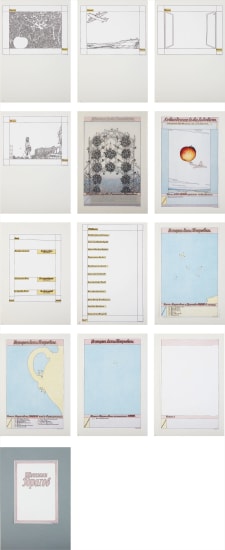


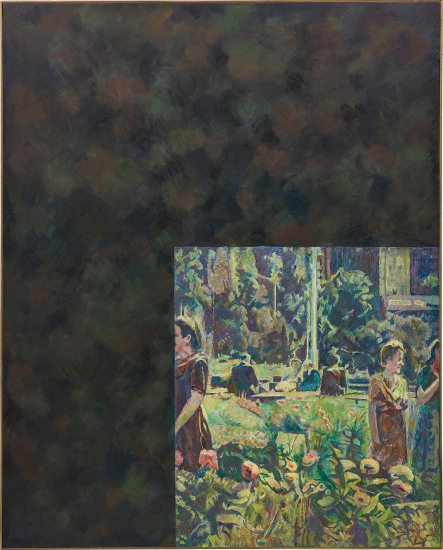

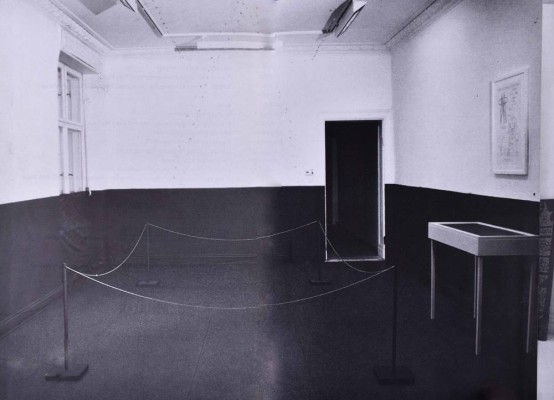
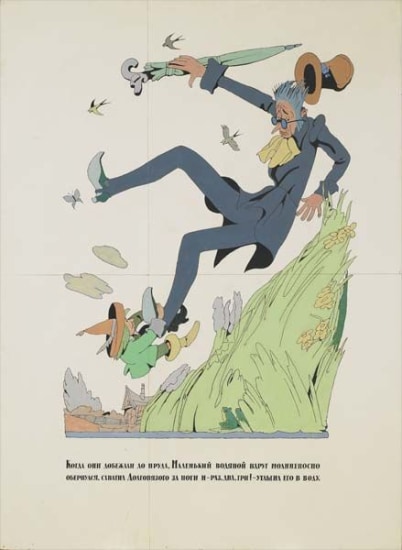

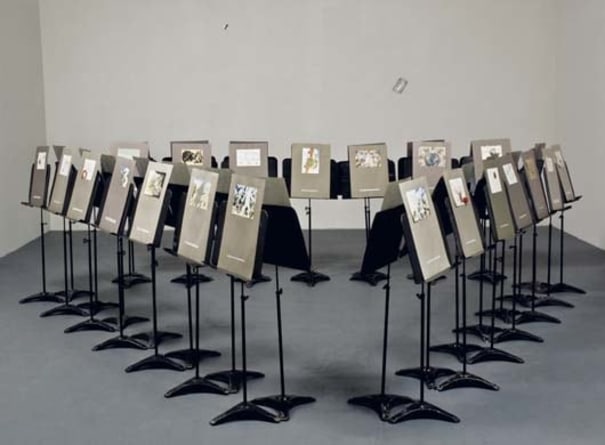
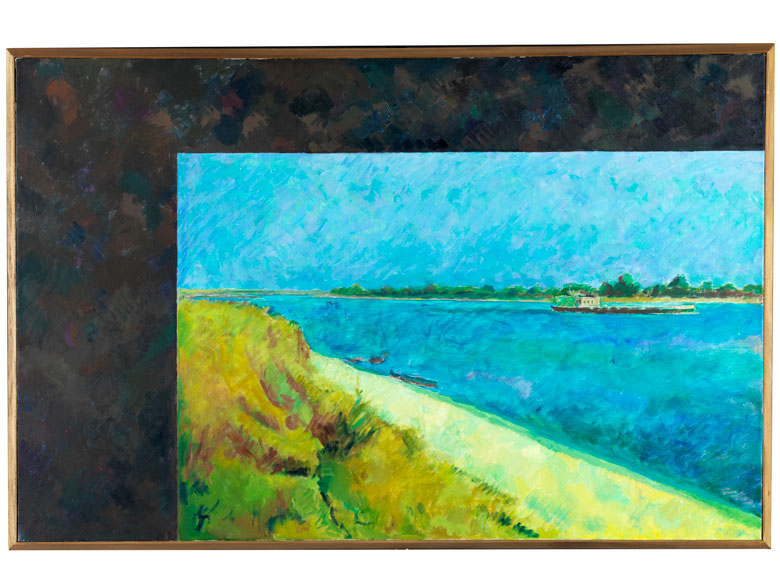
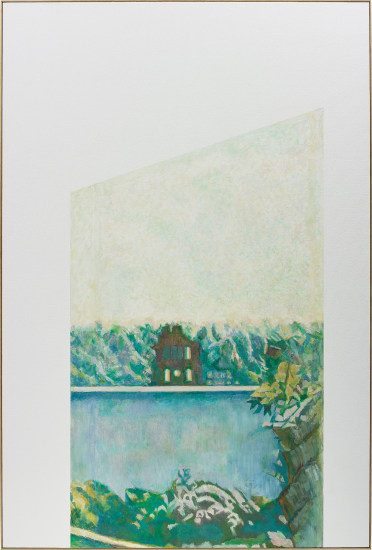


Try LotSearch and its premium features for 7 days - without any costs!
Be notified automatically about new items in upcoming auctions.
Create an alert